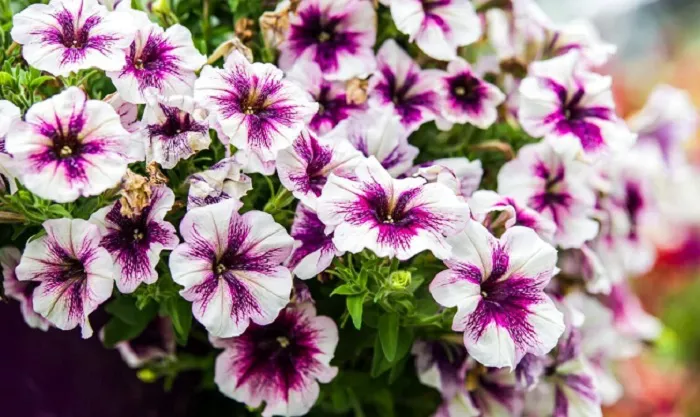Petunias are beloved for their vibrant blooms and ease of care. These charming flowers brighten gardens and containers alike. Understanding their lifespan helps gardeners plan and enjoy their beauty. This article delves into the life cycle of petunias, exploring factors that influence their longevity and offering tips for maximizing their growth.
The Lifespan of Petunias: A Brief Overview
Petunias are generally considered annuals in most climates, meaning they complete their life cycle within one growing season. However, in milder climates or with proper care, they can sometimes survive as perennials. The typical lifespan of a petunia plant ranges from a few months to a year, depending on various factors such as climate, care, and variety.
Annuals or Perennials?
In most regions, petunias are treated as annuals. They grow quickly, bloom profusely, and often die back after the first frost. However, in USDA hardiness zones 10 and above, where winters are mild, petunias can survive as perennials. These plants may continue to grow and bloom for several years with proper care.
Factors Influencing Lifespan
Several factors can impact the lifespan of petunia plants. Climate plays a significant role, as extreme temperatures and harsh weather conditions can shorten their life. Soil quality, watering practices, and pest control also contribute to their longevity. Additionally, the variety of petunia can influence its hardiness and lifespan.
Climate and Weather Conditions
Petunias thrive in full sun and well-drained soil. They prefer temperatures between 60°F and 70°F (15°C to 21°C) during the day and slightly cooler nights. In regions with hot summers, petunias may experience stress and reduced blooming. Similarly, cold snaps and frost can damage or kill the plants. Gardeners in cooler climates should protect their petunias from frost by covering them or moving potted plants indoors.
Soil and Watering Practices
Petunias need well-drained soil to prevent root rot. A mix of garden soil, compost, and perlite is ideal. Overwatering can lead to waterlogged soil, while underwatering can cause wilting. Consistent watering is crucial, especially during dry spells. Mulching around the plants helps retain soil moisture and regulates temperature.
Pest and Disease Management
Petunias are relatively low-maintenance plants, but they can still fall victim to pests and diseases. Aphids, whiteflies, and slugs are common pests that can damage the foliage and blooms. Regular inspection and prompt treatment with insecticidal soap or organic pesticides can help keep these pests at bay. Fungal diseases like powdery mildew can also affect petunias, especially in humid conditions. Ensuring good air circulation and avoiding overhead watering can reduce the risk of disease.
Choosing the Right Variety
There are many varieties of petunias, each with its own characteristics and hardiness levels. Grandiflora petunias produce large blooms and are ideal for hanging baskets. Multiflora petunias have smaller but more abundant flowers and are more resistant to weather conditions. Milliflora petunias are compact and perfect for small spaces. Choosing the right variety for your garden conditions can enhance their longevity and performance.
Maximizing Petunia Lifespan
To extend the life of your petunias, proper care is essential. Deadheading, or removing spent blooms, encourages continuous flowering and prevents the plant from going to seed. Regular fertilization with a balanced, slow-release fertilizer supports healthy growth. Pruning back leggy stems can also promote bushier growth and more blooms.
Container Gardening with Petunias
Petunias are excellent candidates for container gardening. They can thrive in pots, hanging baskets, and window boxes. When growing petunias in containers, ensure the pots have drainage holes to prevent waterlogging. Use a high-quality potting mix and water regularly. Adding a layer of mulch on top of the soil can help conserve moisture. Container-grown petunias may require more frequent watering and fertilization than those planted in the ground.
Overwintering Petunias
In regions where petunias are not hardy, gardeners can try overwintering them indoors. Before the first frost, carefully dig up the plants and transplant them into pots. Place the pots in a cool, bright location such as a sunroom or near a south-facing window. Reduce watering during the winter months, allowing the soil to dry slightly between waterings. With proper care, overwintered petunias can be replanted outdoors in the spring and continue to bloom.
Conclusion
Petunias are versatile and beautiful plants that can brighten any garden. While they are typically annuals, their lifespan can be extended with proper care and attention. By understanding the factors that influence their growth and taking steps to protect them from harsh conditions, gardeners can enjoy the vibrant blooms of petunias for months or even years. Whether grown in the ground or in containers, these flowers are sure to bring joy and color to any outdoor space.


